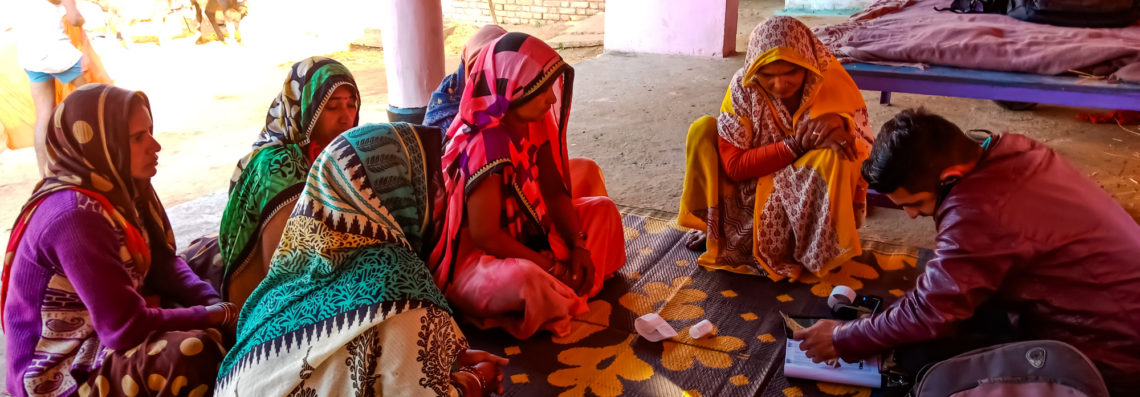In his last blog, Steve Haley, Director of Economic Development, redefined financial inclusion as “equitable access and usage of safe and connected savings, credit, insurance, and payments.” The focus is on “equitable” because different products and services are required to provide the same opportunity for individual customers to thrive. And “connected” because the underbanked pay a “poverty tax” when utilizing services from multiple institutions. A connected system alone will not truly include the underbanked. In this blog, Steve identifies what industry and financial regulators must change to create equitable payment systems that include the underbanked.
Author’s note: I use the term “MFI” (microfinance institution) because I primarily work with this industry. For this article, however, “MFI” refers to any small financial inclusion-focused institution whose primary product is microlending and secondary product is microsavings. These are also known as rural banks, credit unions, cooperatives, BPRs, or sometimes just… banks.
A widening digital abyss
Real-time payments are no longer a thing of the future. They are here. Real-time (push) payment networks (RTPNs) are rewriting the protocols for how payments work. RTPNs allow the payer to move money from an account in one institution to a payee’s account at another institution instantly. Today, there are more than 50 countries that have or are building RTPNs. Some examples are Faster Payments in the UK, Zelle in the US, Unified Payments Interface (UPI) in India, and PayNow in Singapore. And there are another 100 countries planning to build them in the near future. In other words, the financial world is getting connected.
Unfortunately, simply connecting payment systems does not by itself result in equitable access. There is already a massive digital divide between the “rich economy” and the “poor economy.” The BIG question (and what keeps me up at night) is whether the next generation of digital money will finally bridge the gap, or if most of the world will stand by as the digital divide becomes the digital abyss? Will we create equity alongside these connected systems?
At ModusBox, we clearly have an opinion.
Designing RTPNs with MFIs and the underbanked in mind
We believe that there is only one economy. And a connected economy that includes everyone benefits everyone. That’s why MFIs in every market should band together to demand a seat at the table with their big bank peers. If the world is to successfully create a global payments system where everyone equitably participates, institutions that serve the underbanked must play a major role in redefining the new payments regime.
In our work with MFIs throughout Asia and Africa, we have identified the following criteria to drive the adoption of payment systems in the MFI market.
For the underbanked, a payment system must:
- Provide value in their daily lives. Simply providing access and usage are not enough. Financial services must help people survive and then thrive.
- Give them options. The customer should be able to choose which wallet, bank, service, or agent works best for them and their busy, resource-constrained lives.
- Unlock the ability to transact with middle-income participants seamlessly. There is only one economy, so there should be only one digital economy free of intermediary steps.
- Allow them equal access to innovative services. MFIs and their customers should not be 2-3 innovations behind the middle-income sector. They should have access to new payment modes like QR payments, government services, credit scoring, biometrics (and whatever else we haven’t thought of yet) when those services become available to everyone else.
For the institutions that serve the underbanked, a payment system must:
- Eliminate unbalanced dependencies on larger financial institutions. Today, most MFIs have to choose one mobile wallet, one bank, or one for-profit technology aggregator. This encourages rent-seeking behavior.
- Create revenue that exceeds the cost of participation. This is a challenge because most RTPNs introduce insanely high human, technical, and deposit costs to participate. MFI margins are already thin.
- Maintain the human touch. Conforming to the operations model of big city digital banks won’t work in this market. MFIs must continue to deliver the critical value they add to hard-to-reach communities.
ModusBox is taking several approaches to reduce inherent costs and simplify and standardize connecting to payment networks. If you would like to learn more about how we are helping MFIs, read this 3-part blog series covering our work in Myanmar or how we are building technical capacity for MFIs in Tanzania.
Creating a seat at the “big bank table” for MFIs
Equitable change doesn’t take place overnight, however. The global payment system as we know it today was built by big banks for their wealthy customers. It was designed to create financial profitability, not financial inclusion. To close the digital gap, we need to rethink the approach to designing and building RTPNs. And that must include input from MFIs.
We have identified 17 systemic (but surmountable!) obstacles that industry authorities and government regulators must solve to build partnership with MFIs and enable successful participation.
Align regulation and policy
- Clarify participation strategies. Policymakers must go beyond simply admitting that small financial institutions should be included to determining how they should be included – for each use case.
- Eliminate multi-regulator barriers. MFIs often have different regulators than their mobile money and bank peers. It isn’t uncommon for these regulators to pass the buck of responsibility for inclusion. This regulatory split is, in the age of the interconnected economy, an artifact from an earlier age. It’s time for regulatory stakeholders to embrace the emerging digital economy.
- Support cloud-native regulations. The cloud has enabled small businesses around the world to participate in the digital economy. It can do the same for small financial institutions. And it’s more secure!
- Simplify participation requirements. The process to join should not require a Ph.D. in paperwork and an army of lawyers. MFIs lack the proper resources for such complexity. Streamlining the process should be the policy.
- Consider KYC at the beginning. Mobile money and MFIs have different KYC requirements. That should be considered as part of the design process, not a “fix it later with duct tape” solution. If this is addressed from the start, it becomes a parameter, not an obstacle.
- Refresh MFI association governance. Even if some members are left behind initially, the MFI association should be able to make decisions that enable the leading institutions to thrive so that, eventually, the rest can catch up.
- Build a market for indirect participation to ensure adequate participation. Indirect participation (through banks or aggregators) is acceptable, as long as the process and pricing are clear and published with several options available. There should be a process and legal right for an MFI to move from one to another, with service level agreements.
Reduce costs
- Operate basic hubs (clearing and settlement) as a not-for-profit utility. The bells and whistles might cost extra, but the core hubs should run as a not-for-profit.
- Remember to include other shared services like fraud and disputes. These services are more efficient when shared anyway, and only big banks can afford their own.
- Reduce liquidity requirements through frequent settlement. T+1 settlement(or, yikes, T+3 or worse) with arbitrarily large liquidity requirements are a reflection of an earlier time when bulk settlement was a challenge. There is no longer a need for long settlement windows that exclude smaller financial institutions that cannot afford the T+3 liquidity requirements.
- Design security models to include MFIs. Expensive VPN and dedicated line models are not scalable. Technology has enabled better solutions over the open internet using PKI (Public Key Infrastructure). It’s not 1990 anymore!
- Simplify and automate onboarding. Most MFIs aren’t using core banking solutions with open APIs, certificate management, and payments orchestration, so the payment hub operator should offer tools to make this easier – ideally including self-onboarding.
- Provide tools to assist in operations such as transaction monitoring. Software vendors that serve MFIs (both core banking vendors and third-party providers) need to be engaged in the future of MFI participation to ensure that their products move beyond simple loan portfolio tracking. We work closely with providers such as Musoni who also believe in that vision.
Build the right products
- Consider MFIs’ business requirements. The details of use case design like account codes and KYC levels need to take MFI realities into account for their highest priority use cases: peer-to-peer and merchant payments.
- Allow small FIs to form schemes to suit their needs. This is okay as long as these schemes can connect with others. Not all national schemes will want to enable the products that MFIs need.
- Enable payment sandboxes. MFIs need to experiment with products in sandbox environments with a clear path to live transactions.
- Place special emphasis on “Me-2-Me” transactions. MFIs usually only serve a portion of low-income customers’ needs. Sending payments to their own wallet or cash out is often a crucial need.
Help us drive connected AND equitable financial services
If MFIs are forced to rely on the table scraps of big banks and the mobile money sector, a connected global real-time payments system will fail to provide equitable services for the most vulnerable people groups by design.
Solving a global problem like this requires the alignment of all stakeholders from government regulators, industry associations, payment system consultants, financial inclusion-focused non-profits, technology providers, foundations, impact investors, and others. If you’re one of these and this vision resonates with you, please connect with me or start a conversation below. I’d love to talk to you.






